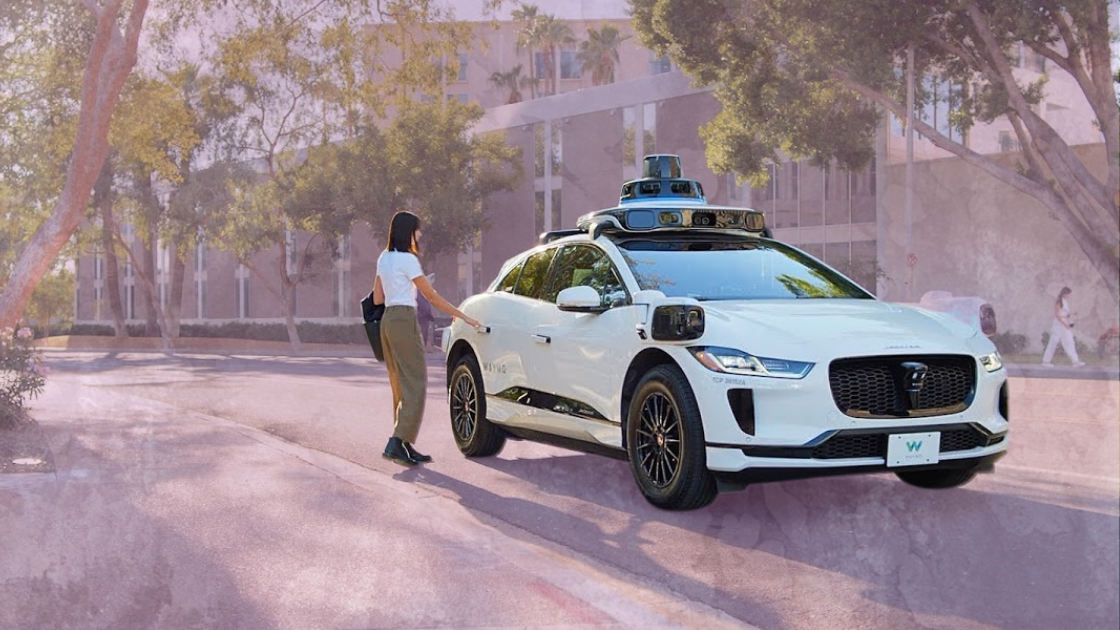Hey Everyone
Tariffs are still here. And while some OEMs are eating it, others are passing it down.
Dealers—share how yours is handling it now that August is here.
Welcome to the Automaker Tariff Tracker, a comprehensive, real-time playbook for OEM guidance on the evolving tariff landscape—and what dealers can expect.
AUDI $AUDVF ( ▼ 7.62% )

Audi may be eyeing a $4.6 billion factory in the southern U.S. as it looks for ways to ease tariff exposure, per Der Spiegel via Automotive News.
Sources say the Q5—Audi’s bestseller, currently built in Mexico—is a top candidate for U.S. production, though the Q3 (Hungary) and Q7 (Slovakia) are also on the table.
The move would mark a major shift as the brand navigates the Trump administration’s import fees, which initially put a hold on Audi vehicles arriving at U.S. ports after April 2.
Audi’s official word for now? “We continue to evaluate various options but have nothing to share at this time.”
BMW $BMWYY ( 0.0% )

BMW has been navigating tariffs on multiple fronts, and it’s starting to show.
After modest price hikes on May 1 (per dealer memos obtained by CDG), BMW followed up with another round on July 1: average increases of 1.9%, with performance trims like the X5M climbing as much as $2,500, according to Motor1.
CEO Oliver Zipse said in May (via The Guardian) that he expected U.S. tariffs to ease by July as trade deals took shape—but so far, no relief.
Instead, BMW now says tariffs from the U.S., EU, and China could cost it €1 billion this year, with EU levies on Chinese-made EVs alone hitting about €100 million in Q1.
In the meantime: The brand’s Spartanburg, South Carolina plant remains its key buffer shield against tariffs.
FORD $F ( ▼ 0.23% )

Ford’s “From America, For America” employee pricing promo wrapped on July 4.
Now, the brand is going all in on a new pitch: “Zero, Zero, Zero.”
As of July 8, Ford is offering $0 down, 0% interest for 48 months, and no payments for 90 days on most vehicles under select terms.
The 2025 model year Raptor, Bronco Sport, Bronco, Expedition, Maverick, Ranger, Transit, Super Duty, and Lincoln Navigator are excluded, according to Ford.
“Employee pricing for all was easy to understand and resonated with customers,” Rob Kaffl, director of U.S. sales and dealer relations, wrote on July 8. “But we also heard from our Ford and Lincoln dealers that more customers could benefit if we could reduce the upfront, out-of-pocket expense to buy or lease a vehicle.
The summer campaign also offers a two-year Ford Protect Premium Maintenance Plan to help cover cost-of-ownership basics like oil changes and tire rotations.
Beyond that: Kaffl announced that Ford will be extending its Power Promise through Sept. 30, becoming one of the first OEMs to nod to the looming EV tax credit deadline.

GM is putting $4 billion into its U.S. plants over the next two years as it works to offset the $5 billion tariff hit it’s bracing for this year (per a GM release).
The plan: Spring Hill will start building gas Blazers, Fairfax will add Equinox production—both by 2027—and Michigan’s Orion plant is shifting from EV trucks to gas SUVs and pickups.
CEO Mary Barra frames it as a push for customer choice and U.S. jobs, but the goal is clear: GM’s boosting domestic output past 2 million units annually to stay competitive as tariffs reshape the playing field.
HONDA $HMC ( ▼ 0.54% )

Honda remains in wait-and-see mode, even months into the tariff shakeup.
The latest: During the OEM’s May 20 business strategy briefing, CEO Toshihiro Mibe said the company would not rush into a major North American factory overhaul until it sees how trade talks evolve and how the U.S. midterm elections play out.
While several sources have pointed out that Honda has shifted some Civic hybrid and CR-V production to U.S. plants to soften tariff hits, Mibe warned that additional “drastic revisions” could come if tariffs stick long-term.
For now: Major new investments or sweeping changes to Honda’s footprint seem unlikely.
HYUNDAI $HYMTF ( ▼ 7.44% )

Hyundai is holding prices steady for now, denying reports that it’s raised sticker prices after its price protection window ended on June 2.
The company says its June review was standard, and not tied to tariffs, even as speculation swirled that hikes were coming to offset the hit from Trump’s 25% import duties.
The reality? With just 26% of its U.S. sales coming from domestic production, most of Hyundai’s lineup remains exposed.
Yes, brand is ramping up U.S. output, including shifting some Tucson builds from Mexico to Alabama and launching EV production at its new Georgia plant—but imports still dominate the mix.
Big picture: Hyundai’s pricing moves in the coming weeks will show how long it can hold the line.
INFINITI

Guidance shared by Infiniti in April revealed that production of the Infiniti QX50 and QX55 is paused “until further notice.”
The details:
QX50 and QX55 models now carry a 52% total tariff (25% new + 27% from March).
QX80 is hit with a separate 25% tariff.
Marketing-wise, April incentive programs remain unchanged.
Current showroom inventory remains tariff-free, and dealers are encouraged to move those units while they can.
Looking ahead: Infiniti is planning to share more guidance during the April 11 all-retailer broadcast.
JAGUAR LAND ROVER

Jaguar Land Rover and other U.K. automakers will get some tariff relief under a new U.S.-U.K. trade deal announced in May, per Automotive Manufacturing Solutions.
The agreement caps tariffs on U.K.-built vehicles at 10%—down from the 25% rate imposed in April—but imposes a strict 100,000-unit annual quota. Any exports beyond that face the full 27.5% tariff.
For JLR: The company exported around 102,000 vehicles to the U.S. last year, per the report. And while the revised terms are a step up from April’s peak rates, they fall short of pre-tariff norms and could limit growth.
U.S. exports were resumed by JLR in early May after a month-long pause, signaling acceptance that some tariff costs may hit consumers.
This means the entry-level Range Rover Evoque could see prices climb nearly $12,500, while the base Range Rover could jump $27,000 if full duties are passed through.
Big picture: The deal leaves tariffs on parts at 25%, adding continued uncertainty for supply chains and future investment decisions.
MAZDA $MZDAY ( ▲ 1.72% )

Mazda is still holding the line on pricing, absorbing tariff costs to shield dealers and consumers, at least for now.
Back in April: The company said it was eating about $175 million in tariff costs that month, keeping adjustments focused on incentives rather than MSRPs.
But the backdrop keeps getting tougher…
Japan’s auto exports to the U.S. plunged nearly 25% year-over-year in May as tariffs squeeze margins and choke shipments (Moody’s Analytics via CNBC).
What we’re watching: With a 25% levy already on Japanese vehicles and a new 24% reciprocal tariff on all exports coming July 9, Mazda and other Japanese brands face even steeper headwinds.
MERCEDES-BENZ $MBGYY ( ▲ 0.63% )

Mercedes-Benz expects tariffs to shave less than 3% off its car margins in Q2 — a smaller blow than initially projected, according to Bernstein, following a recent investor call.
The details: Mercedes-Benz pointed to improving U.S.-China trade dynamics, timing of tariff implementation, and internal cost offsets as reasons the impact hasn’t been as steep.
The automaker in April had withdrawn its 2025 guidance back when the new tariffs were announced, bracing for a tougher margin squeeze if duties remained in place all year.
While U.S.-built models like the GLE and EQE SUVs help buffer some exposure, imported vehicles in the lineup continue to face significant cost pressure.
Currently, retail demand is holding up. But parts and service costs could creep higher as trade tensions drag on.
MITSUBISHI

Mitsubishi in June joined the wave of automakers passing tariff costs to buyers.
The brand is bumping U.S. prices by an average of 2.1%, according to The New York Post—a move it frames as part of its “regular review of pricing,” but one that also comes on the heels of April’s 25% tariffs on imports.
Deliveries to U.S. dealers were paused after the tariffs hit, but restarted last week.
As usual, price hikes won’t touch vehicles already on showroom floors.
Mitsubishi says the increases help keep pricing competitive while the company leans into U.S. plans, including updates to the 2025 Outlander, a coming battery EV, and work with Nissan on a U.S.-built model.
Bottom line: The 2.1% hike may sound modest, but it’s another sign of how tariffs are squeezing the supply chain, and how the cost is landing where it always does…aka with the consumer.
NISSAN $NSANY ( ▲ 0.72% )

Since April’s 25% tariffs took effect, Nissan has accelerated its shift to U.S. production.
The focus: Maxing out output at its Smyrna, Tennessee, plant—the brand’s largest U.S. facility, with the Rogue leading the charge, as outlined by CBT News.
Smyrna has a capacity for 640,000 units a year, and Nissan is working to ramp up toward that mark as fast as possible.
On top of that, Nissan has since paused U.S. orders for two Mexican-built Infiniti SUVs and cut Rogue and Pathfinder pricing by up to $2,000 to stay competitive.
It’s also exploring adding hybrids, more U.S.-built Infiniti models, and greater domestic parts production as part of a longer-term push to localize.
Add to that Nissan’s move to sell 5% of its Renault stake, unlocking $640 million for new product development, along with plans to cut 20,000 jobs, close 7 plants, and freeze U.S. merit raises—and its push to rein in spending is clear, tariff-related or not.
STELLANTIS $STLA ( 0.0% )

Stellantis is still playing defense as tariffs reshape the market.
The company has yanked its full-year guidance, saying it’s impossible to forecast accurately while trade policies keep shifting (per its April 29 earnings call).
CFO Doug Ostermann says guidance will return “in a high-quality way” once the dust settles.
On the ground: Windsor’s plant is back at two shifts as of June 23, focused on gearing up for 2026 models. But Toluca in Mexico (shut down since April) still hasn’t fully restarted, leaving dealers watching inventory gaps and racing to secure U.S.-built stock.
The bigger picture? Stellantis says it’s adjusting in real time, but with no clear end to the volatility, the playbook is still being written.
SUBARU

Subaru bumped prices across almost its entire lineup starting May 8 as tariff-driven costs ripple through its supply chain, according to Cars.com.
Increases hit U.S.-built models too: Ascent climbed by as much as $2,055, the Outback by up to $1,820, and most other lines saw similar hikes. (Additional price hikes listed here.)
The company says the changes reflect market conditions and aim to protect value for buyers. Worth noting, too, destination fees stayed put, and the price jumps came straight through the MSRPs.
Tariffs are squeezing Subaru on parts and imports, and the added costs are now landing squarely on consumers.
TOYOTA $TM ( ▼ 0.08% )

Toyota is raising U.S. vehicle prices by an average of $270 starting this month, with Lexus models up about $208 on average (Bloomberg).
The company says it’s just part of its regular price review—but coming right after 25% tariffs hit, the timing says plenty.
Worth noting: Toyota had signaled back in May that hikes were likely, joining Ford and Subaru in moving past earlier promises to hold prices steady through June.
The increases are modest, suggesting Toyota’s eating most of the tariff costs to stay competitive, but consumers are still feeling it.
VOLKSWAGEN $VWAGY ( ▲ 0.08% )

VW is keeping U.S. pricing steady for now, but the clock’s ticking.
The company is in active talks with Washington over tariff relief, with CEO Oliver Blume describing the discussions as “fair” and “constructive” (Reuters).
To make its case: VW is spotlighting its U.S. footprint and $5.8 billion Rivian investment—and says it’s ready for “massive” new U.S. investments if trade terms improve.
Meanwhile, the pressure’s real. Core models like Jetta, Taos, and Tiguan, built in Mexico, remain highly exposed to tariffs. VW has also paused rail shipments from Mexico and is juggling port storage as it navigates this shifting landscape.
VOLVO $VLVLY ( ▼ 0.03% )

Recent reports indicate that Volvo is slashing 3,000 jobs (about 15% of its office workforce) as part of a $1.9 billion cost-cutting push aimed at tackling slowing EV demand, tariff pressures, and unpredictable markets.
CEO Håkan Samuelsson says the company needs to “structurally lower costs” and boost cash flow as it faces what he calls a “challenging period.”
What we’re watching: Volvo remains particularly exposed to U.S. tariffs, with most of its production tied to Europe and China. And while Samuelsson has vowed to increase output at Volvo’s South Carolina plant and potentially add another model there, U.S. dealers continue advertising stable MSRPs.











